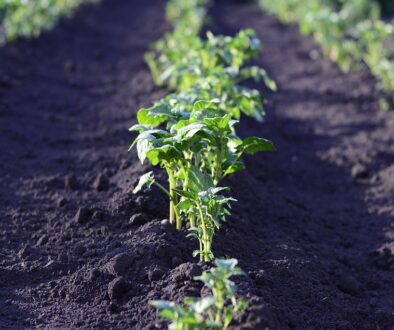From Seed to Salad: Your Ultimate Guide to Organic Gardening
Article by: Suzette Morshead
In a world dominated by convenience food and processed snacks, the idea of growing your own organic garden may seem daunting. However, nurturing your own vegetables from seed to salad not only provides a bounty of fresh produce but also connects you deeply to the earth. Imagine strolling through your backyard, plucking bright, juicy tomatoes, crisp cucumbers, and vibrant greens, all while knowing they’re free from harmful chemicals. As daunting as it may feel at first, the journey to organic gardening can be incredibly rewarding.
My Personal Journey
My passion for organic gardening began on a lazy Saturday morning. Frustrated by the rising costs of organic produce and the mediocre quality of store-bought vegetables, I decided to try my hand at growing my own. With no gardening experience, I felt like a fish out of water, but as the saying goes, “You learn by doing.” Armed with a few books, some supplies, and sheer determination, I ventured into this green world.
I still vividly remember planting my first seeds—romaine lettuce and cherry tomatoes. I meticulously followed the instructions, imagining the delicious salads I’d whip up. Over weeks of nurturing, my plants thrived and I felt a sense of pride as I watched them grow. Little did I know that this small step would spark a lifelong love affair with gardening.
The Benefits of Organic Gardening
Organic gardening isn’t merely a trend; it’s a way of life that offers numerous benefits:
-
Healthier Food: Organic produce is free from synthetic pesticides and fertilizers, leading to healthier meals for you and your family.
-
Environmental Sustainability: Organic gardening promotes biodiversity and supports the ecosystem, making it a more sustainable choice.
-
Connection to Nature: Tending to a garden grants you an intimate connection to nature, providing mental clarity and peace in our busy lives.
-
Cost-Effective: Growing your own vegetables can save money over time, reducing grocery bills and the expense of buying organic foods.
- Flavor and Freshness: Nothing beats the taste of freshly harvested produce. Homegrown vegetables are often more flavorful than store-bought varieties.
Getting Started: Supplies You’ll Need
The right supplies can make your gardening journey smoother and more enjoyable. Here’s a list of the essentials you’ll need to start your organic garden:
1. Seeds
- Choose organic seeds suited to your climate and personal taste. Popular choices include tomatoes, lettuce, cucumbers, and herbs like basil and cilantro.
2. Soil
- Use quality organic potting soil or create your own mix with compost, peat moss, and vermiculite to ensure the best growing conditions.
3. Containers or Garden Bed
- Depending on your space, opt for raised garden beds, traditional in-ground gardens, or containers if you’re limited on space.
4. Watering Can or Hose
- Consistent watering is crucial; a watering can is great for small gardens, while a hose with a spray nozzle works well for larger areas.
5. Mulch
- Organic mulch, such as straw or shredded leaves, helps retain moisture, suppress weeds, and enhance the soil.
6. Gardening Tools
- Basic tools like a trowel, shovel, hand rake, and gloves are essential for planting, weeding, and harvesting.
7. Compost Bin
- Start your own compost pile to recycle kitchen scraps and yard waste, enriching your soil with nutrients.
8. Organic Fertilizers
- Look for organic fertilizers to support plant growth. Options include fish emulsion, seaweed extract, or homemade compost.
Planting Your Seeds
Once you have your supplies, it’s time to plant! Here’s a simple guide to follow:
1. Prepare the Soil
- Loosen the soil with a shovel or trowel. If planting in containers, fill them with your organic potting mix.
2. Planting Seeds
- Follow the seed packet instructions for depth and spacing. Generally, larger seeds are planted deeper, while smaller ones just need a shallow sprinkle.
3. Water Gently
- After planting, water gently to avoid displacing the seeds. Ensure the soil remains moist but not waterlogged.
4. Watch and Wait
- As your seeds germinate, ensure they receive ample sunlight. Rotate your containers or garden plot if necessary to maintain even sunlight.
Caring for Your Garden
Once your plants start growing, consistent care is vital. Here are a few tips:
-
Water Regularly: Aim for a deep watering once or twice a week, depending on the weather.
-
Weeding: Regularly check for weeds that compete for nutrients and water. Hand-pull them or use an organic weed barrier.
-
Pest Patrol: Keep an eye out for pests. Use natural remedies like neem oil or insecticidal soap, or attract beneficial insects like ladybugs.
- Fertilizing: Feed your plants with organic fertilizers, especially during the growing season, to ensure they have the nutrients they need.
Harvesting and Enjoying Your Salad
The true reward of your efforts comes when it’s time to harvest. Once your veggies have reached their peak, gently pluck them from the vine or plant. The first time you slice into a homegrown tomato and taste its sweetness is an experience you won’t soon forget.
A Simple Salad Recipe
To enjoy your harvest, try this simple and refreshing salad recipe:
Ingredients:
- Mixed greens (e.g., romaine, spinach)
- Cherry tomatoes, halved
- Cucumber, sliced
- Fresh basil or parsley, chopped
- Olive oil
- Balsamic vinegar
- Salt and pepper to taste
Instructions:
- In a large bowl, combine mixed greens, tomatoes, cucumber, and herbs.
- Drizzle with olive oil and balsamic vinegar.
- Season with salt and pepper, toss gently, and serve immediately.
Conclusion
From the initial thrill of planting seeds to the gratifying taste of your first salad, organic gardening is more than just a hobby—it’s a transformative experience. Each plant is a testament to your patience, hard work, and love for the earth. So grab your seeds, roll up your sleeves, and watch your garden flourish. Happy gardening!
From Seed to Salad: Your Ultimate Guide to Organic Gardening
Article by: Suzette Morshead


